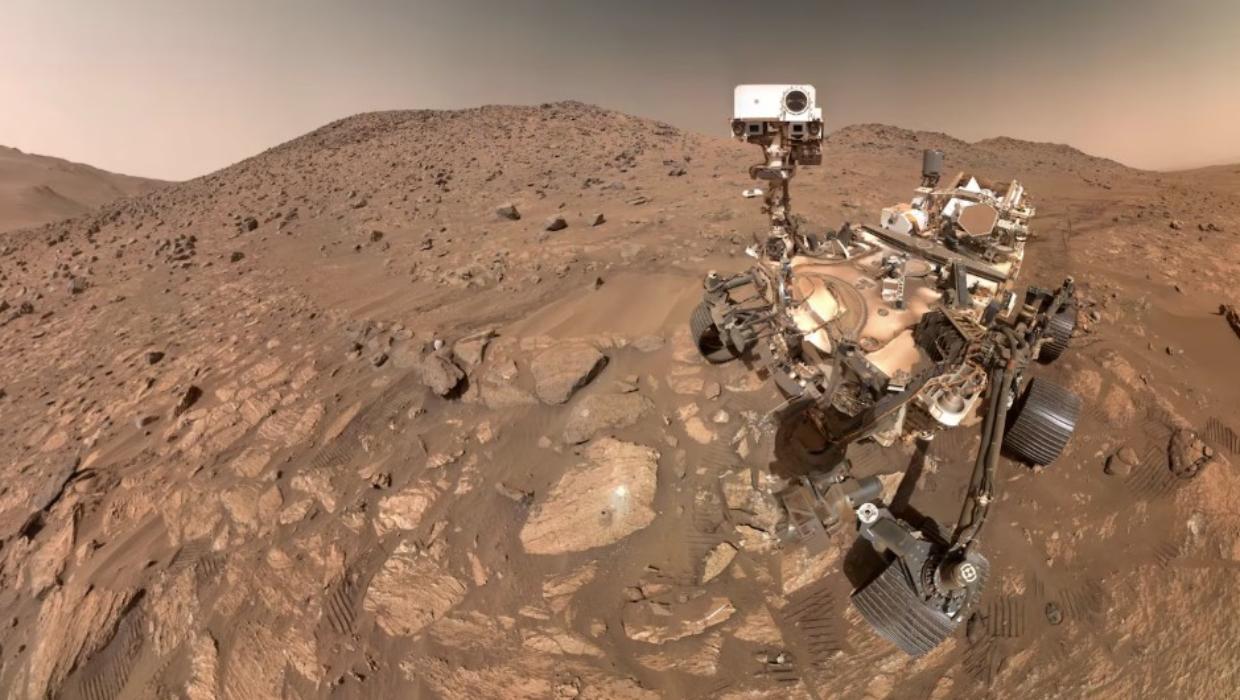Science
NASA Detects Possible Life Signatures in Mars Rock Samples

NASA scientists have identified what they describe as the “clearest sign of life that we’ve ever found on Mars” through detailed analysis of images taken by the Perseverance rover. This discovery involves a potential biosignature found in speckled rocks located in the Jezero Crater, an area believed to have once harbored water.
The findings were revealed during a recent press conference held by NASA on October 12, 2023. The analysis focused on rock samples collected by the Perseverance rover, which has been exploring Mars since its landing in February 2021. The rover’s advanced instruments captured high-resolution images that allowed scientists to examine the geological features and mineral compositions of the Martian surface.
Dr. Jennifer Trosper, project manager for the Perseverance mission at NASA’s Jet Propulsion Laboratory, stated, “We are excited about these new findings, as they provide a glimpse into Mars’ ancient environment and its potential to support life.” The team emphasized that while this discovery does not confirm the existence of life, it does offer crucial insights into the planet’s past.
The analysis identified specific minerals, including carbonates and sulfates, that are typically associated with biological processes. These minerals were found in a layered formation that suggests a history of water activity, which is essential for life as we know it. The Jezero Crater, where the rover is currently stationed, is of particular interest due to its ancient river delta that likely formed when water flowed through the area.
As part of the ongoing investigation, NASA plans to conduct further examinations of the samples. The objective is to better understand the geological history of Mars and assess its habitability. Researchers hope that this work will pave the way for future missions that could include returning Martian samples to Earth for more in-depth analysis.
This significant finding is part of a broader effort by NASA to explore Mars and its potential for harboring life. The Perseverance rover, equipped with cutting-edge technology, has been instrumental in gathering data that could reshape our understanding of the Red Planet.
The implications of this research extend beyond mere curiosity. Understanding Martian geology and the potential for life can inform future missions and the search for extraterrestrial life in our solar system and beyond. As NASA continues its exploration, the scientific community eagerly anticipates further discoveries that may emerge from the Perseverance rover’s journey on Mars.
In conclusion, while the evidence remains preliminary, the potential biosignature identified in the Jezero Crater marks a promising step in the quest to uncover the mysteries of life beyond Earth. As investigations proceed, NASA remains committed to unveiling the secrets of Mars and understanding its past.
-

 World3 months ago
World3 months agoTest Your Knowledge: Take the Herald’s Afternoon Quiz Today
-

 Sports3 months ago
Sports3 months agoPM Faces Backlash from Fans During Netball Trophy Ceremony
-

 Lifestyle3 months ago
Lifestyle3 months agoDunedin Designers Win Top Award at Hokonui Fashion Event
-

 Sports3 months ago
Sports3 months agoLiam Lawson Launches New Era for Racing Bulls with Strong Start
-

 Lifestyle3 months ago
Lifestyle3 months agoDisney Fan Reveals Dress Code Tips for Park Visitors
-

 Health3 months ago
Health3 months agoWalking Faster Offers Major Health Benefits for Older Adults
-

 World3 months ago
World3 months agoCoalition Forms to Preserve Māori Wards in Hawke’s Bay
-

 Politics3 months ago
Politics3 months agoScots Rally with Humor and Music to Protest Trump’s Visit
-

 Top Stories3 months ago
Top Stories3 months agoUK and India Finalize Trade Deal to Boost Economic Ties
-

 Entertainment3 months ago
Entertainment3 months agoExperience the Excitement of ‘Chief of War’ in Oʻahu
-

 World3 months ago
World3 months agoHuntly Begins Water Pipe Flushing to Resolve Brown Water Issue
-

 Science3 months ago
Science3 months agoNew Interactive Map Reveals Wairarapa Valley’s Geological Secrets









